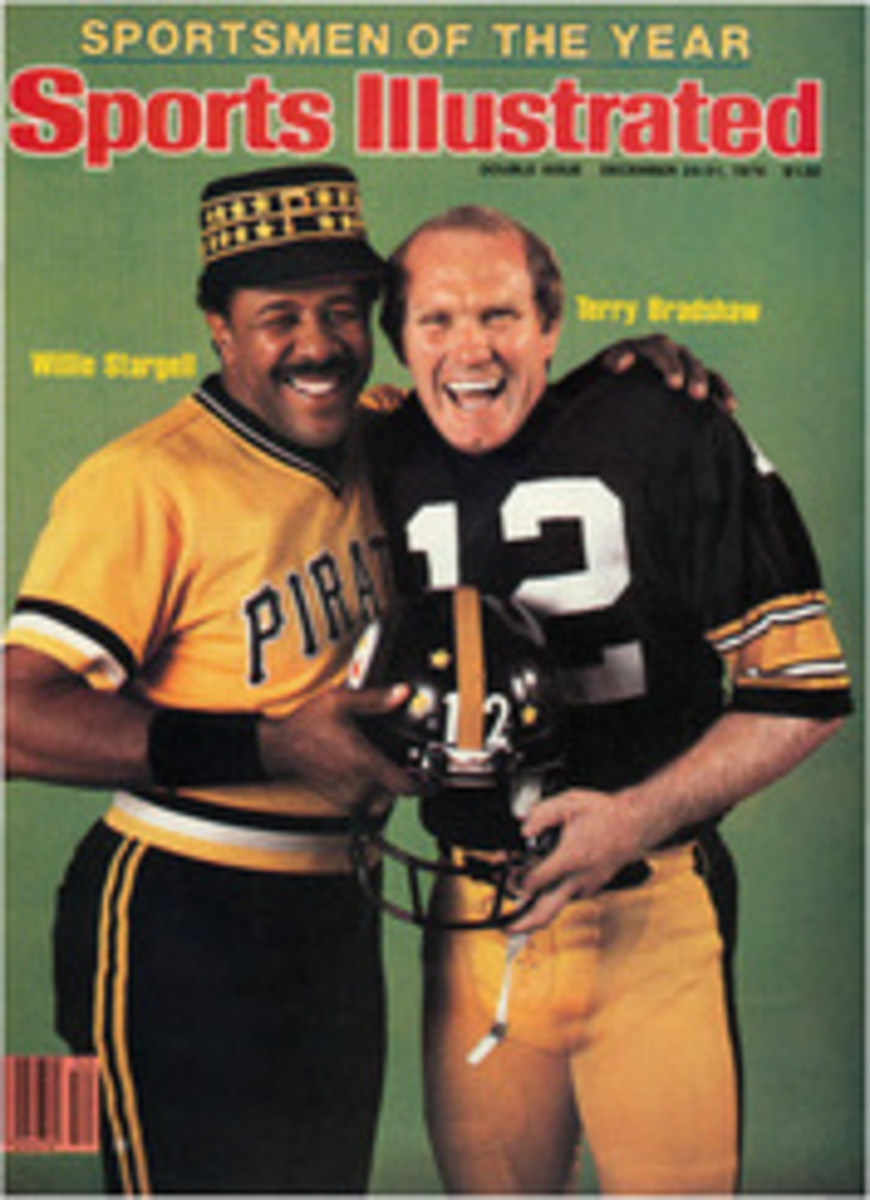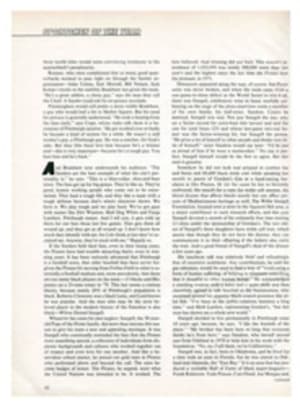
BEFORE MOST OF US HAD HEARD OF SURFING, THERE WAS A PERFECT WAVE
I was never much of a surfer, but I recall it as a fine sport, one which often demanded the virtue that Hemingway labeled "grace under pressure." Defined in prosaic language, this would be one's ability to handle danger calmly. And the danger in surfing is often clear enough, because a 15-foot wave is a relentlessly moving wall of water as high as a house. Once such a wave curls and breaks, its rolling white water churns with terrifying power. A mere six- or eight-footer is a force a novice should be wary of.
In Hawaii in the 1950s, surfing was competitive only in the sense that one did his best to escape the wave, outrun the break, and therefore defeat it. It was man against nature in as pure a sense as I have ever seen or experienced.
We made our own boards in those days, and it wasn't a complicated or expensive process. An eight-or 10-foot slab of redwood was sawed, planed, sanded to shape and then varnished. The Outrigger Canoe Club, then located in the heart of Waikiki, was usually the site of this work. There were rows of lockers right on the beach in which to store the boards. These redwood planks were used by just about everyone under the age of 40. The much larger and more buoyant hollow boards—thin plywood casings over spruce or redwood frames—were mostly for the old folks. Olympic swimming champion Duke Kahanamoku used one, though, so it was certainly no disgrace.
Boys who grew up surfing on the homemade planks often developed the enormous upper bodies of weightlifters. A plank board is so heavy—as much as 100 pounds—that it sinks about half a foot under water when you lie on it to paddle; and until you are conditioned to it, three hours of such surfing is an exhausting workout. I doubt that there was a stronger group of teen-agers anywhere on earth in those days.
It wasn't a large group, though, because surfing wasn't really in fashion then. There were no magazines dedicated to it, no one had yet filmed a documentary, and those absurd Hollywood beach-party movies were years away. Canoe Surf and Queens Surf off Waikiki were fairly crowded on weekends, but the rest of the time one could often find oneself alone on very good waves. The now-famous spots like Sunset Beach and Makaha had barely been discovered.
Eight or 10 times a season Waikiki produced fine waves, 10 feet or larger. "First break" surf, we called it. I rode such waves a number of times but never lost my fear of them. Wipe-outs were a way of life for me, although I don't remember that we called them wipe-outs then. I don't think we called them anything. Accidents happened and mistakes were made. The heavy redwood boards were slower, more difficult to maneuver and far less stable than the keeled polyurethane foam models in use today.
A typical wave offered me two choices, neither of them particularly satisfactory. I would catch it just ahead and to the left of the break—this was usually at Canoe Surf—and then stand and slide left across the steep face of the wave ahead of the curling white water. The left slide at Canoe Surf was slower and therefore easier to complete than the right slide. Inevitably, even when I was going left, the white water would gain on me. When this happened I had to exercise one of my two options. I could stay where I was near the middle of my board and allow the wave to move in and crash over me, dump me, roll me head over heels underwater for 20 or 30 yards while my board continued on another hundred yards or so toward shore. Or I could step forward on the board, which would increase my speed but almost invariably would also send the nose slicing underwater. This was called a "pearl dive," and it would send me headfirst into the water ahead of the wave to roll head over heels for 20 or 30 yards. The advantage in pearl diving was that the board often would emerge behind the wave, saving me the long swim after it.
I had only one truly successful and memorable ride in more than five years of surfing. I had come straight to the beach from school, grabbed my board from its locker and paddled out without checking the surf.
The waves at Canoe Surf were better than average, five feet or so, and I had them to myself all afternoon. Then, toward evening, the temperature dropped a few degrees and the offshore breeze picked up a little. Straddling my board, shivering but too happy to quit, I looked out to sea for another set. I could see it coming from a long way off, hills of water against the horizon, piling up against the wind, growing as they came.
I let the first four waves go by and caught the fifth. For some reason, I fancied that five was my lucky number. I was irrationally confident. Even though I had never ridden such a large wave well—and had seldom tried—I was sure that I could do it now.
So I caught the wave, and I calmly and mysteriously succeeded. I will say that the fifth wave was 10 feet high, though I truly believe it was closer to 12. It was so steep when it reached me, feathered on top, ready to curl, that I only paddled once and I was on it.
I turned the board left and stood up. Then there was a flood of beauty and emotion. Up near the crest of the wave, sliding left, I heard a crash and roar behind me. Glancing over my right shoulder, I saw a tunnel of silver water only feet away. Ahead of me the first four waves rolled hugely in.
The break was gaining on me, was almost over me when I stepped forward on the board. For once I felt myself in control. There was no pearl dive, only the smooth acceleration of the board and the feeling of enormous power behind me—power to be used, not feared.
The board was mine. The wave was mine. The very sea itself seemed mine. The ride had begun better than a quarter-mile offshore, and it ended near the beach, the wave finally spent and dying. I had sense enough to quit then. I never looked toward the sea as I paddled in.
When I left Hawaii in 1955, new and improved boards had already arrived from California—Malibu boards, they were called—and they were made of fiber-glass-covered balsa, and had large keels. Hundreds of young California surfers arrived with these boards; the sport as we know it today had been born. As is usual, much has been lost in this process of growth. I'm lucky, I think, to have surfed when I did. One sweet, mysterious wave turned five years of struggling with a redwood plank into a memory that has warmed me for 25 years.

